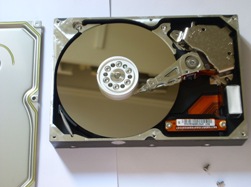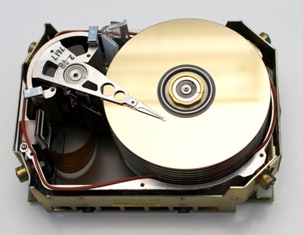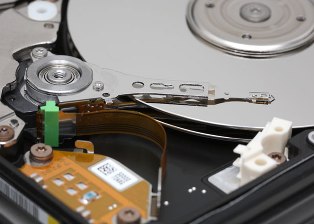Categories: Featured Articles » Interesting Facts
Number of views: 11285
Comments on the article: 1
Hard drives: dinosaurs of modern electronics
 Hard disk drives are so familiar elements of computers that when bundling a new system unit, difficulties arise only with the choice of the manufacturer. The capacity of modern hard drives exceeds all conceivable needs for storing programs and data and allows you to create a reserve "for growth". Forecasts about their imminent “death” and replacement with SSDs have remained forecasts for many years.
Hard disk drives are so familiar elements of computers that when bundling a new system unit, difficulties arise only with the choice of the manufacturer. The capacity of modern hard drives exceeds all conceivable needs for storing programs and data and allows you to create a reserve "for growth". Forecasts about their imminent “death” and replacement with SSDs have remained forecasts for many years.
The design of hard drives was implemented in the 50s and basically has not changed until today. The first disk was released in 1956 and its contemporaries were radio tubes, phonograph records and punch cards for data input. Transistors existed only as laboratory samples (see Transistor history), about microchips, especially microprocessors have not even dreamed of.
Since that time, magnetic tape drives, noisy rotary hammers, floppy disks have gone into oblivion. The latest computer models no longer install optical disk drives, although a decade ago they were an attribute of any computer.

One of the first hard disk drives
So what allows a mechanical data storage system with magnetic disks to safely exist in the modern world of mass miniaturization and the triumph of integrated technologies? For this, it is necessary to follow the stages of improving drives and their modern capabilities. To begin with about the possibilities: in modern drives, the distance between the tracks does not exceed 60 nanometers, and the positioning accuracy of the read head is at least 10 nanometers.
Now let's take a look at the achievements in the field of microprocessors. Modern Intel processors with Ivy Bridge architecture have 22 nm. technological standards and are manufactured using x-ray lithography. And this achievement is considered the pinnacle of microminiaturization.
Technological standards with element sizes of 14 nanometers are only planned for implementation (processors with Haswell and Broadwell architecture). It is enough to compare with the already implemented positioning accuracy of 10 nanometers in hard drives and it will become clear that it is too early to write off mechanical systems.
And on the approach of a product of even greater capacity: single plates with a volume of 1 terabyte and a total storage capacity of up to 6T. Moreover, these are not laboratory samples, but serial products. Their entry into the market so far is not constrained by technical problems, but by economic considerations. So far, the number of suitable plates in drives of larger capacity is not high enough, and the price of such products is “biting”.

It should be noted one more factor that allows hard drives to successfully compete with solid state drives - their highest reliability. Many computers, having served 5-10 years, are discarded as obsolete products. During this time, the user sometimes changes the processor, installs more powerful video cards. But rarely when there are problems with hard drives, both with their reliability and capacity. And this is the best recommendation for a "dense" electromechanical system.
The modern world is increasingly inclined to use mobile devices. This is where hard drives have to make room. Even using devices with 2.5-inch wafers requires too much power. Therefore, in the sector of mobile computers, SSDs are increasingly being installed. But in productive desktop computers and server stations, hard disk drives will continue to take advantage of their reliability and capacity for storing vast amounts of information.
We recommend reading:The development of the electronic components base
See also at bgv.electricianexp.com
:
